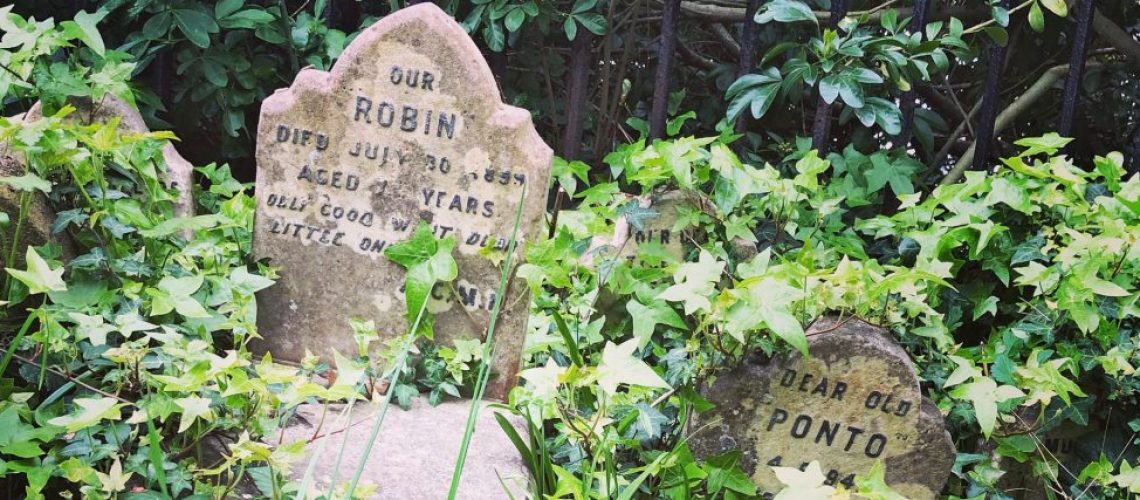Tucked away in a corner of Hyde Park is a patch of green scattered with tiny headstones, a place where well-to-do Victorians commemorated joyful times with their beloved pets, among them Cherry, Spot and dear old Topsy
It may be the happiest cemetery that you will ever visit. The Victorian pet cemetery in Hyde Park certainly speaks of the sadness of losing a family friend, but there is also an overwhelming sense of the joy that pets can bring. Stroll around the tiny headstones and you can sense the happy memories of sunlit walks in the park and quiet shared moments.
We owe the existence of the cemetery to a little Maltese terrier called Cherry, who died in 1881. Her owners, the Lewis Barned family, wanted her to be buried in the royal park, where little Cherry had romped so happily.
Mr Winbridge, the Victoria Lodge gatekeeper, obliged them and no doubt spotted a lucrative sideline because over the next few years many more pets found a final resting place in the lodge’s back garden. The similarity of many of the headstones suggests that a funeral package may have been on offer.
There may be over 1,000 pets in the cemetery, mostly cats and dogs, and most of the funerals date from the Victorian and Edwardian era.
Some of the pets’ names can be very moving – one headstone simply says ‘Spot’ and conjures up the memory of a very faithful old companion. Other owners were keen to emphasise that their pets were proper members of the middle classes. Dear old Topsy, for example, was for over 15 years ‘the faithful friend of J C H Flood, barrister-at-law and his family’.
There is also the tragic memorial of a murder victim: Balu, who was ‘poisoned by a cruel Swiss’ in Berne in 1899 and who was no doubt repatriated to this country before interment with all due ceremony in the park’s cemetery.
It is perhaps worth remembering that, while the Victorian and Edwardian middle classes were paying for funerals for much-loved pets, elsewhere in Westminster some members of the working classes were living in poverty and could only look forward to a pauper’s grave.
The cemetery is not open to the public, except for occasional guided tours, but you can take a virtual tour with the Royal Parks on YouTube, https://youtu.be/HrWitagNj8k
Image: Simon Bleasdale

